Although I model the RCW in 15mm, many of my previous projects would translate quite easily into 28mm and much was gleaned from 20mm raw materials. Baron Ungern-Sternberg was known to have had the TSR as one of his military objectives. It seemed churlish not to provide such a choice military objective for gaming purposes, so ...
The Telegraph office/station
An out-of-the-way Telegraph office/way station. This could be the focus for a punitive raid as well as a terrain feature appropriate for the railway. I made simple adaptations to the Airfix 4mm weighbridge office. By removing the bottom two levels of clapboarding the height was reduced and the roof replacing with model corrugated iron sheeting. The addition of a simple, rustic, verandah with modelling matches and distressed plastic corrugated sheet gave it the necessary battered outback look. The addition of oil drums and a woodpile, and a metal pipe chimney for the inevitable log stove give it that lived-in look.
Reckoning that ‘telegraph’ would be a borrowed word in both Russian and Chinese I used Altavista’s Babelfish site to get a rendering of (I hope) ‘Telegraph office’ in Cyrillic and Chinese characters to put on the side. A simple chain of telegraph poles, modelled truncated and buttressed against the wind, based on a tourist photo on the web, completed the overall effect.
Loading ramp
One particular feature of isolated railway branches is the goods loading stage or station. Such wayside halts were also found on stretches of the Trans Siberian Railway and its branches. I reasoned that timber would be most plentiful so opted for a simple timber staging made out of modelling matches, built around an expanded polysterene core. A commercially available kit of a 4mm line-side crane, suitably weathered, completed the effect.
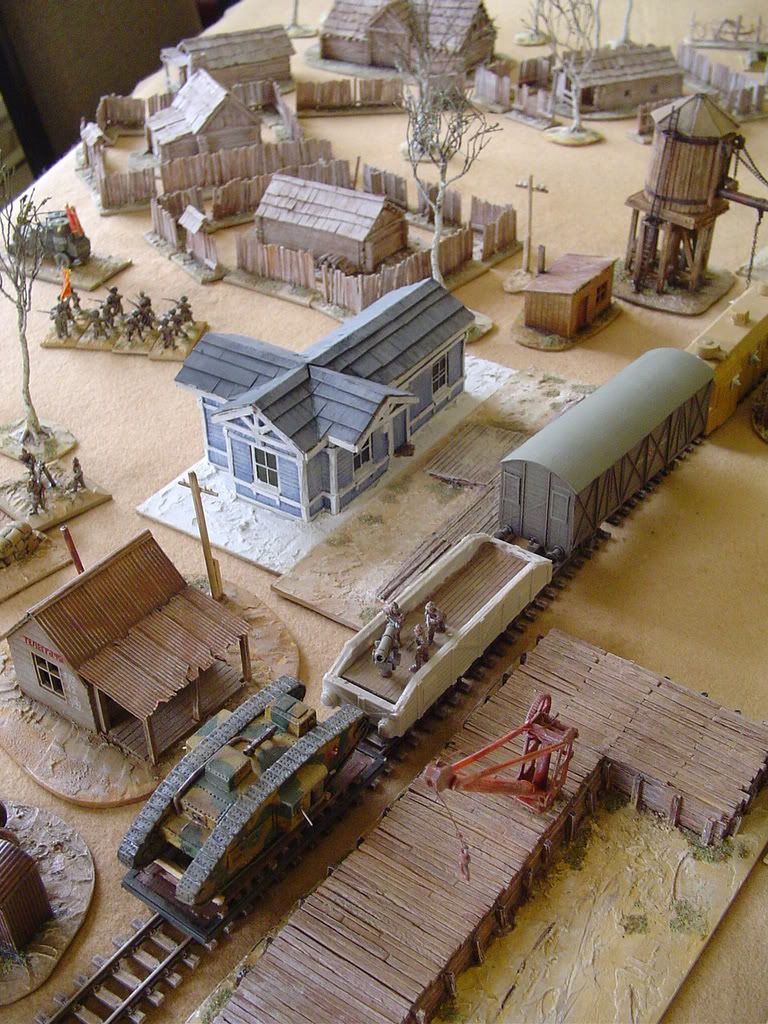
Water tower
The only photos of water towers on the Trans-Siberian Railway show substantial brick built octagonal towers on the main lines. I was looking for a more ‘back of beyond’ feel so looked to other C19 conflicts for inspiration. I based my example on the rudimentary wooden trestle types from the American Civil War period. The simple matchstick drum was built around the cap of a miniature spray can with card hoops and an octagonal balsa wood shingle roof. Lollypop stick and straw piping, together with accessories from an old Airfix Water Tower kit, and scrap chain completed the effect. On reflection, more substantial timber legs are needed to support the weight of the water column, which will require remodelling. The Peter Pig ACW water tower would be a quite suitable commercially available alternative in 15mm.
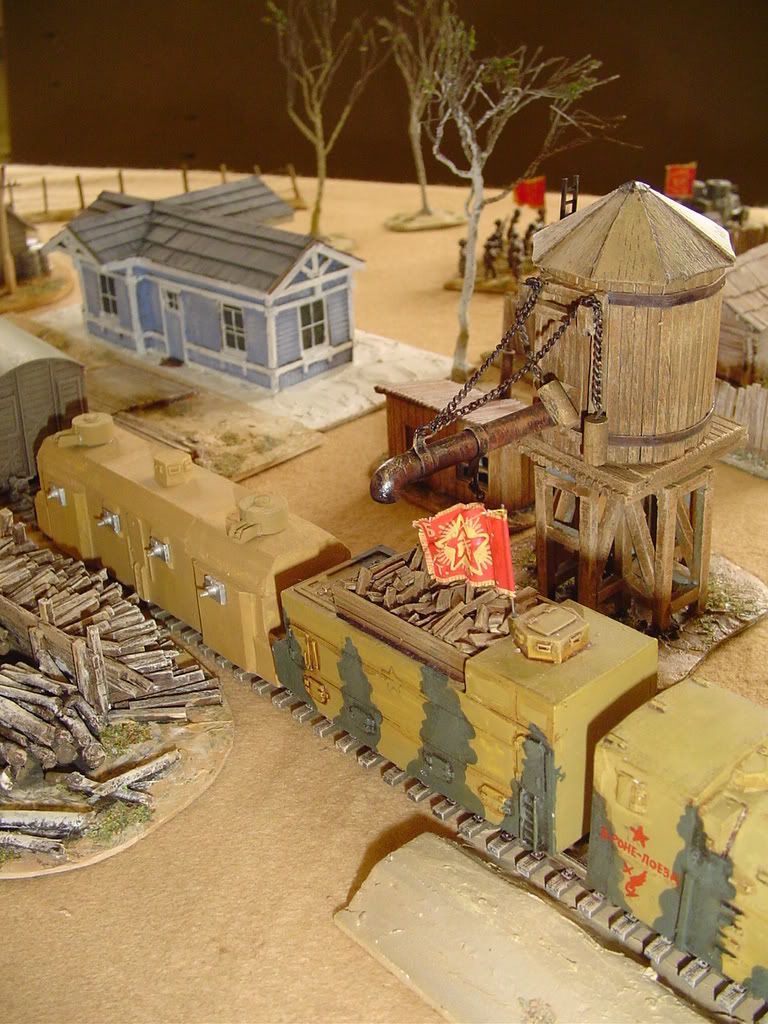
Refuelling point
This is simply a skin of scrap modelling matches covering a polysterene mound set against a wall of wooden planks. This is a simple but vital scenic detail for any wood-burning steam locomotive.
Siberian wooden settlements
There are a number of photographs of old Siberian log cabins, roofed with wooden shingles on the internet. I based several models on these and included a stables and barn in the same style. Plots of land were fenced in using fencing of two styles. The first style was a simple fence of vertical slats, with gates at intervals, some with small V-shaped roofs over the threshold. These gave a ramshackle ‘Fiddler-on-the-Roof’ look. They are also still used to define compounds in modern-day suburbs of Ulan Bataar. The second style was documented in 1913 by the traveller-photographer Stephane Passet in Kyatkha (Siberia). This is the horizontal pole style, similar to that used in America. I reasoned I could make my own, or use stock 15mm ACW scenery.
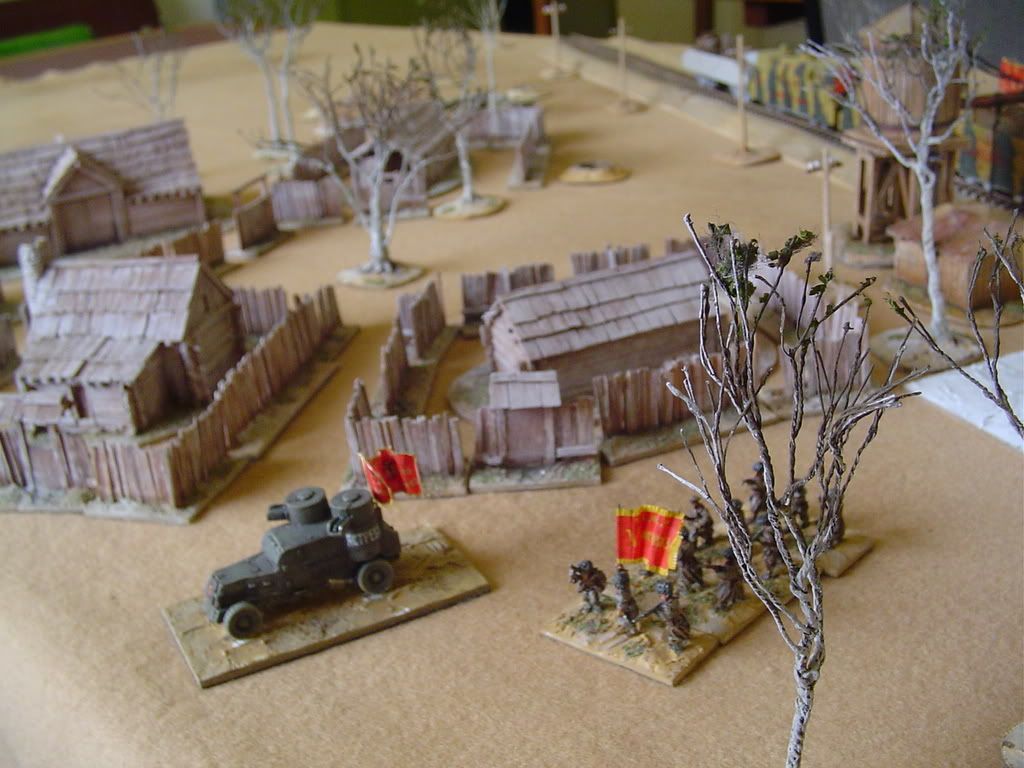
Trans Siberian Railway Station
A trawl of the internet found some images of small station buildings past and present. The majority of the smaller ones shared similar features – simple layouts, wooden boarded sides, often arranged in decorative patterns, sky-blue and white painting (presumably Buriat national colours ), and unusual cowls over the chimney stacks. My generic version has (hopefully) the Cyrillic for ‘Nowhere’ as the signboard
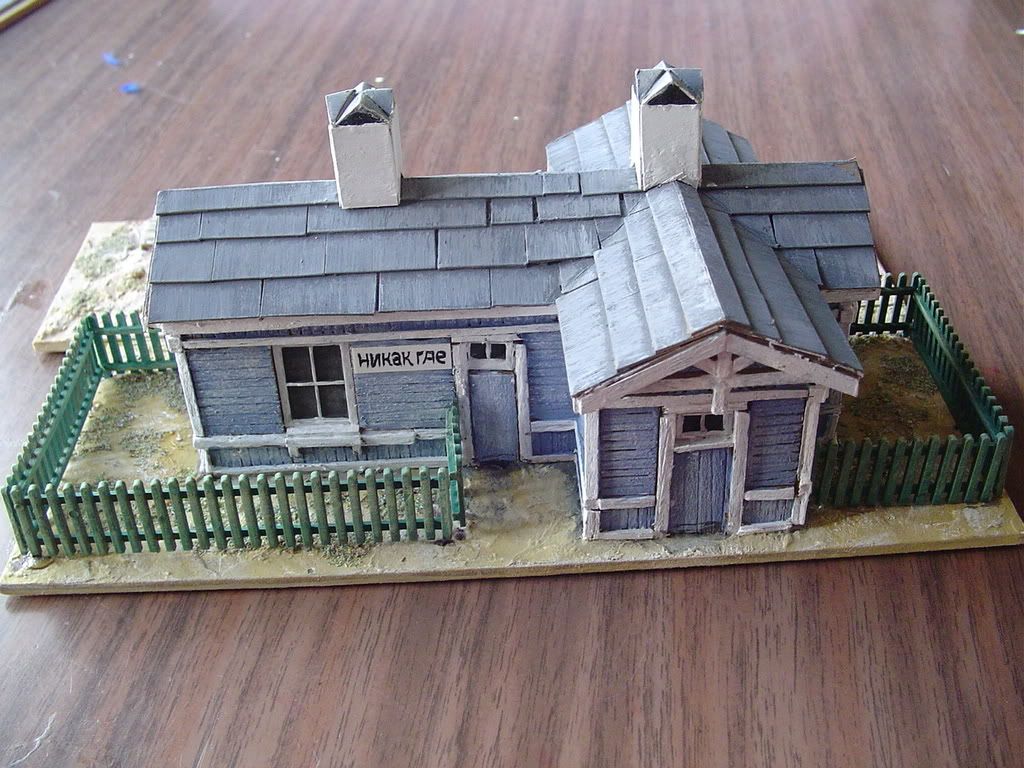
Many of the trains also had box cars for troops. I reasoned I had the option of using PP’s Wild West range at a pinch, since some US rolling stock found its way on the TSR to aid the war effort. However, I chanced upon an OO scale RATIO kit of a GWR box van which was the same width as the gun cars so opted for a relatively simple conversion. Since the Russians used a 5’ gauge with wider rolling stock, the 4mm scale box van would look in keeping. I reduced the gauge of the axles to the required TT scale by cropping them and sleeving them in aluminium tubing. This required narrowing the chassis slightly. Apart from shaving a bit off the roof sides and omitting some of the more fiddly subframe parts, that was the extent of the work, beyond a suitably war-weary looking paint job and Russian markings.
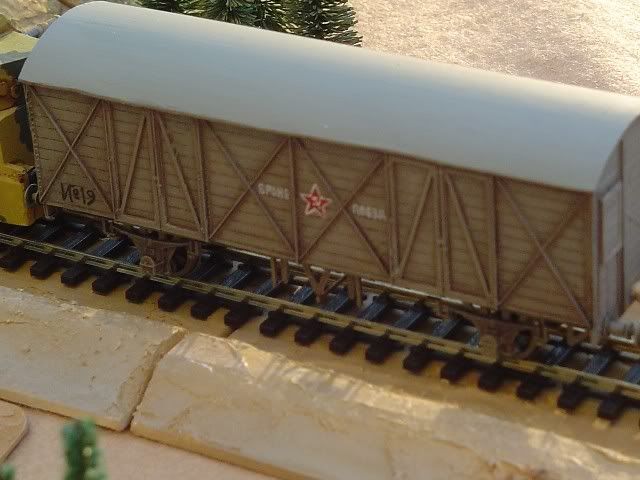
A final, more unusual piece of scenery - Telegraphy transmitters
In 1919, Urga (Ulan Bator) was the site of one of chain of 3 25KW Marconi wireless transmitters (the others at Urumchi and Kashgar) which were established by the Chinese authorities to help reinforce their control on the region. Marconi equipment was railed to Kalgan and then transported by camel and bullock train 800 miles across the Gobi Desert. This included three 100ft steel towers in sections and 50hp petrol engines (a load of over 300tons). The journey took 6 weeks. Some idea of the enormous logistical task can be gleaned from the enormous cavalcade Mr ST Dockray, in charge of the project, organised to establish the other two stations. An enormous caravan of twelve hundred camels, four hundred and sixty eight ponies and one hundred and seventeen bullock carts were used.
Dockray reached Urga in the midst of the conflict between the Chinese and the Whites. He repaired the station and informed the Chinese Authorities what was going on. However the station was shelled by the Whites, putting it out of action and Dockray was captured. He was detained by Ungern-Sternberg but later escaped. My take on the station gleaned from Internet articles, old photos etc.
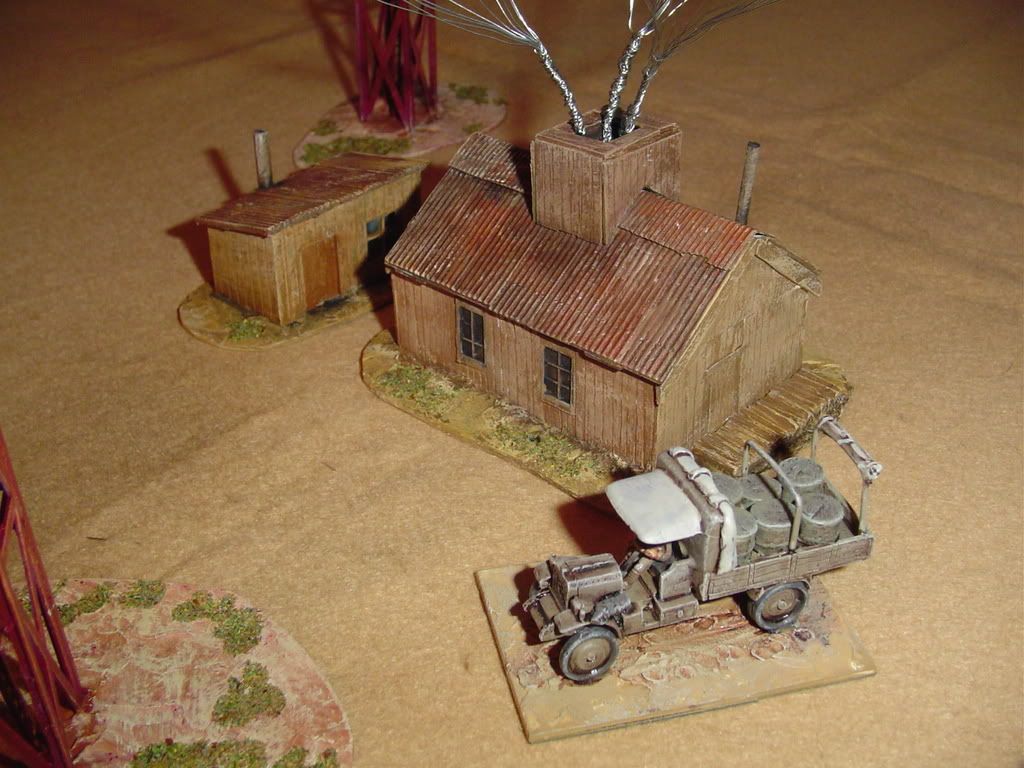
The receiving room, with feeder wires entering through the top stack, and generator hut
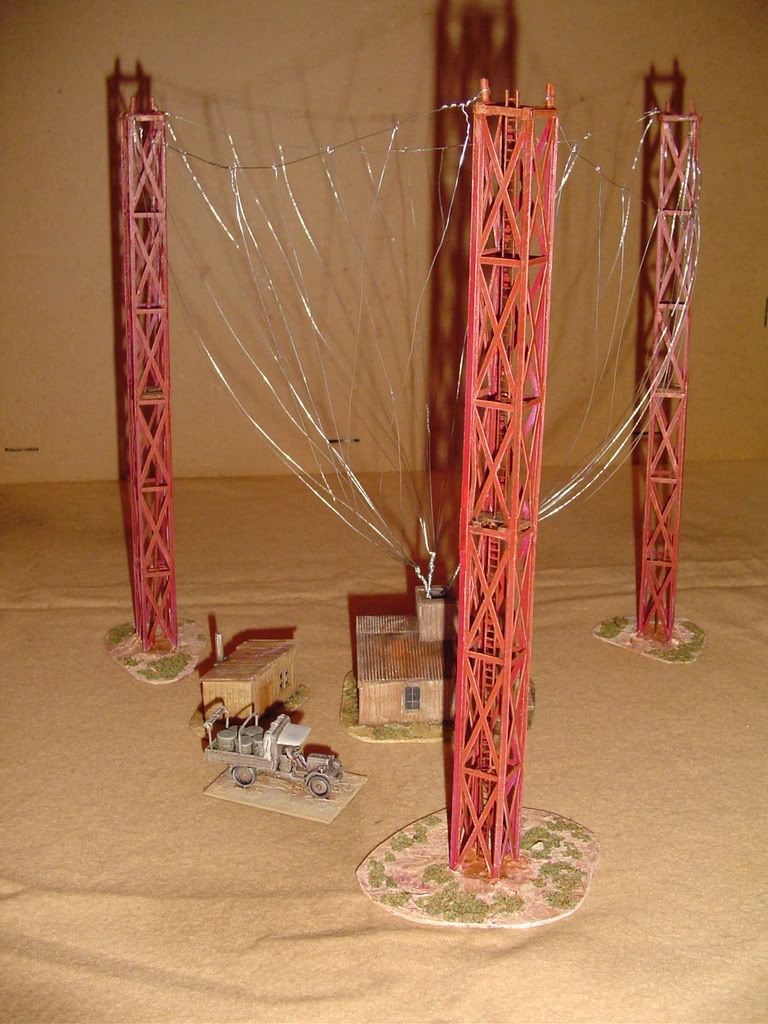
The overall array